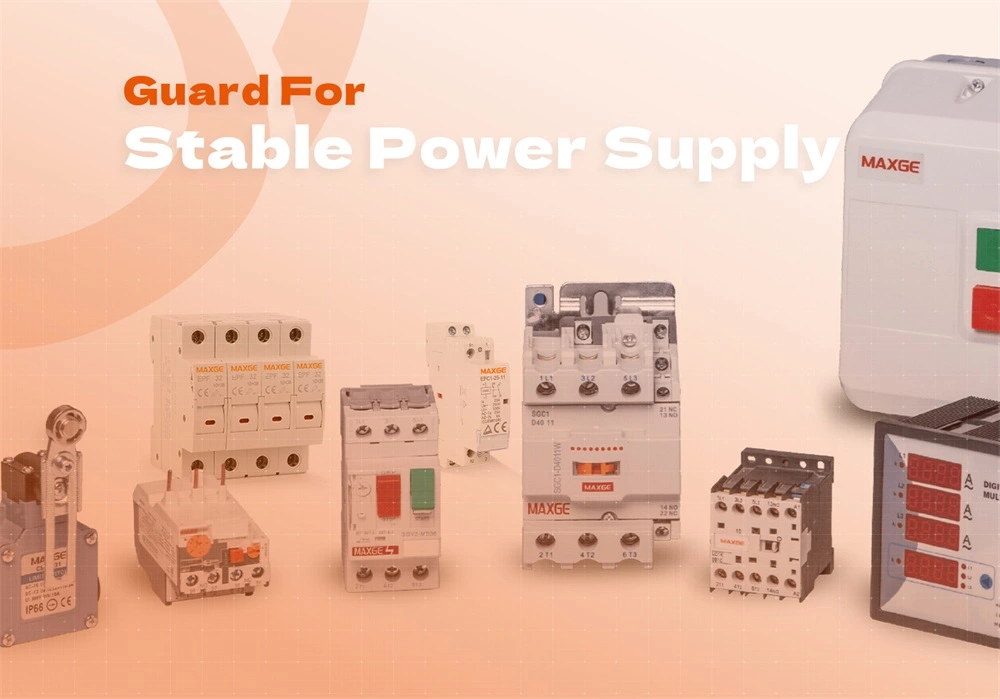Circuit breakers are invaluable devices. They play a significant role in electrical distribution. They effectively protect circuits and equipment from various hazards. These primarily include short circuits, overloads, and ground faults. There are different types of circuit breakers designed for different purposes. This article provides a complete guide to the common types of circuit breakers.
Circuit Breakers: Overview of Different Types
Circuit breakers come in various designs to serve diverse needs. The various types of circuit breakers differ in features like rated voltage and current, tripping characteristics, usage scenarios, and more. Common types include:
- MCB
Miniature Circuit Breakers are the most popular type. They are ideal for low-power branch circuits. They are suitable to be used in residential and small commercial settings. They have a rated current of 1-125A and are installed in distribution boards or panels. An MCB low voltage circuit breaker trips automatically during overloads or short circuits to isolate faulty circuits and protect wiring. MCBs are economical. They are also easily replaceable if faulty.
- MCCB
Molded Case Circuit Breakers are robust. They are suitable for medium-voltage industrial circuits. They have higher current ratings of 16-1600A. These types of circuit breakers are commonly seen in large commercial buildings, factories, and infrastructure utilities.
- RCCB
Residual Current Circuit Breakers detect leakages to the ground through an electrical imbalance. They quickly respond even to small faults and protect users against electric shocks. The current rating is typically 16-100A. RCCBs are ideal for socket circuits, fixed equipment, and wherever personnel safety is critical.
- RCBO
Residual Current Operated Circuit Breakers combine MCB and RCCB in one device. They offer overload as well as residual current protection simultaneously. RCBOs find extensive application in general household wiring systems, small offices, and various industrial settings. These types of circuit breakers provide cost-effective dual protection.
- ACB
Air Circuit Breakers use air to interrupt faults. They are suitable for main distribution boards with currents in the 200-7500A range. ACBs have compact designs optimized for switchgear rooms and substations where space is limited. They can isolate faults very quickly with high breaking capacities.
- MPCB
Motor Protection Circuit Breakers boast high performance and reliability. They integrate the functions of overload relays and circuit breakers and offer protection against short circuits, overloads, and phase imbalances. This ensures motor reliability and safety.
Key Takeaways
Here are the key takeaways of the main types of circuit breaker:
| Type | Functions | Usage Scenarios |
| MCB | Overload and short circuit protection | Low power branch circuits in homes and offices |
| MCCB | Overload and short circuit protection | Medium to high voltage industrial circuits |
| RCCB | Earth leakage/residual current protection | Socket circuits, equipment, areas requiring personnel safety |
| RCBO | Overload, short circuit, and earth leakage protection | House wiring systems requiring twin protection |
| ACB | Overload and short circuit protection | Main distribution boards with high currents |
| MPCB | Against short circuits, overloads, and phase imbalances | Industrial settings requiring motor protection |
Maxge Manufactures Robust, Reliable Circuit Breakers
The reputed brand Maxge provides safe and efficient power solutions, including many common types of circuit breakers. As one of the premier circuit breaker manufacturers, we have strong R&D capabilities and modern manufacturing facilities. Certified to ISO, we prioritize product quality and reliability.
Our circuit breaker series includes MCBs, RCCBs, and RCBOs are known for inherent mechanical qualities. Our EPB-63Se MCB line exhibits elegant aesthetics for commercial and residential use. Visual indicators and insulated terminals prioritize user safety during installation and maintenance. Our SGR/2 RCCBs incorporate precise fault detection mechanisms to isolate circuits instantly if hazardous currents are encountered.
Conclusion
Circuit breakers come in different designs to protect electrical systems based on location, current, and safety features required. Proper selection depends on application parameters and protection objectives. As a leading manufacturer, Maxge offers an extensive range of high-quality circuit breakers. We combine technical excellence with affordable pricing to deliver optimum solutions worldwide. Browse our website to explore our innovative range and experience our service excellence first-hand.



